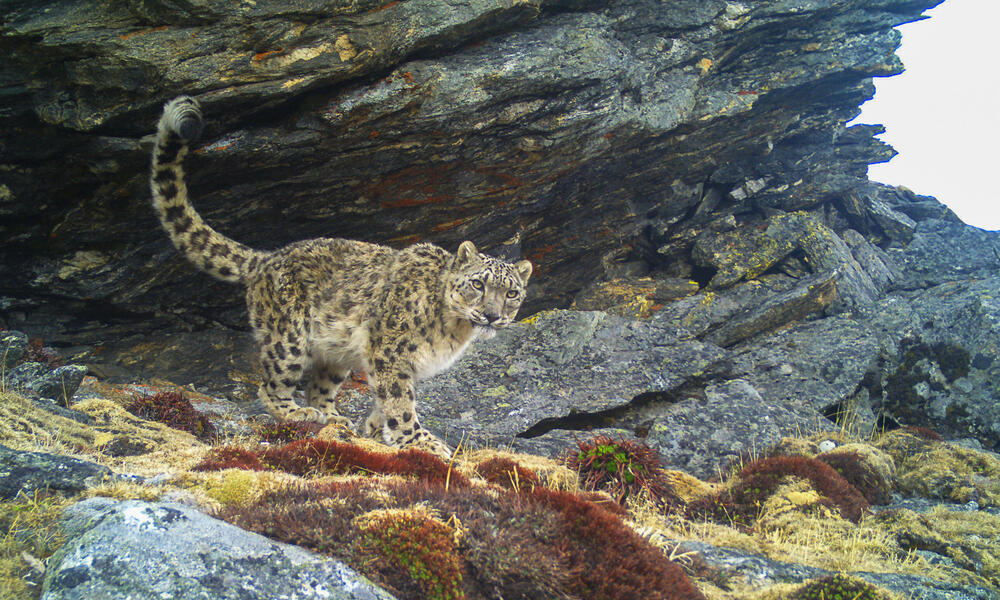Snow leopards live high in the Himalayas—one of the least forgiving environments and among the most challenging places to study— making our critical efforts to assess their population incredibly difficult. Fortunately, skilled scientists in India completed the first-ever rigorous examination of the country’s snow leopard population, estimating that 718 of these iconic big cats live within the country’s borders.
Findings in the Snow Leopard Population Assessment will contribute to understanding snow leopard ecology and the importance of their high-altitude habits. India joins Bhutan and Mongolia as one of the first countries to establish their snow leopard population. India’s large-scale assessment was highly intensive and required surveying over 10 million acres of the habitat and deploying about 2,000 camera traps that produced thousands of photos.
“India’s study marks a leap forward, not just for the 718 majestic cats counted, but for conservation itself,” said Dechen Dorji, senior director for Asia, Wildlife Conservation. “This landmark effort, spanning vast and rugged Himalayan terrain, provides crucial data to guide their protection. It’s a triumph of collaboration, perseverance, and scientific rigor, offering immense hope for safeguarding this elusive protector of the High Himalayas. It marks an important milestone in our collective efforts to ensure their survival and that their landscapes thrive for generations to come.”
WWF-US collaborates closely with WWF-India and supports the capacity to research and survey some of the key landscapes vital for the snow leopard. The report underscores the Himalayas’ critical role as a refuge for snow leopards and emphasizes the importance of international collaboration like the Global Snow Leopard and Ecosystem Protection Program.

